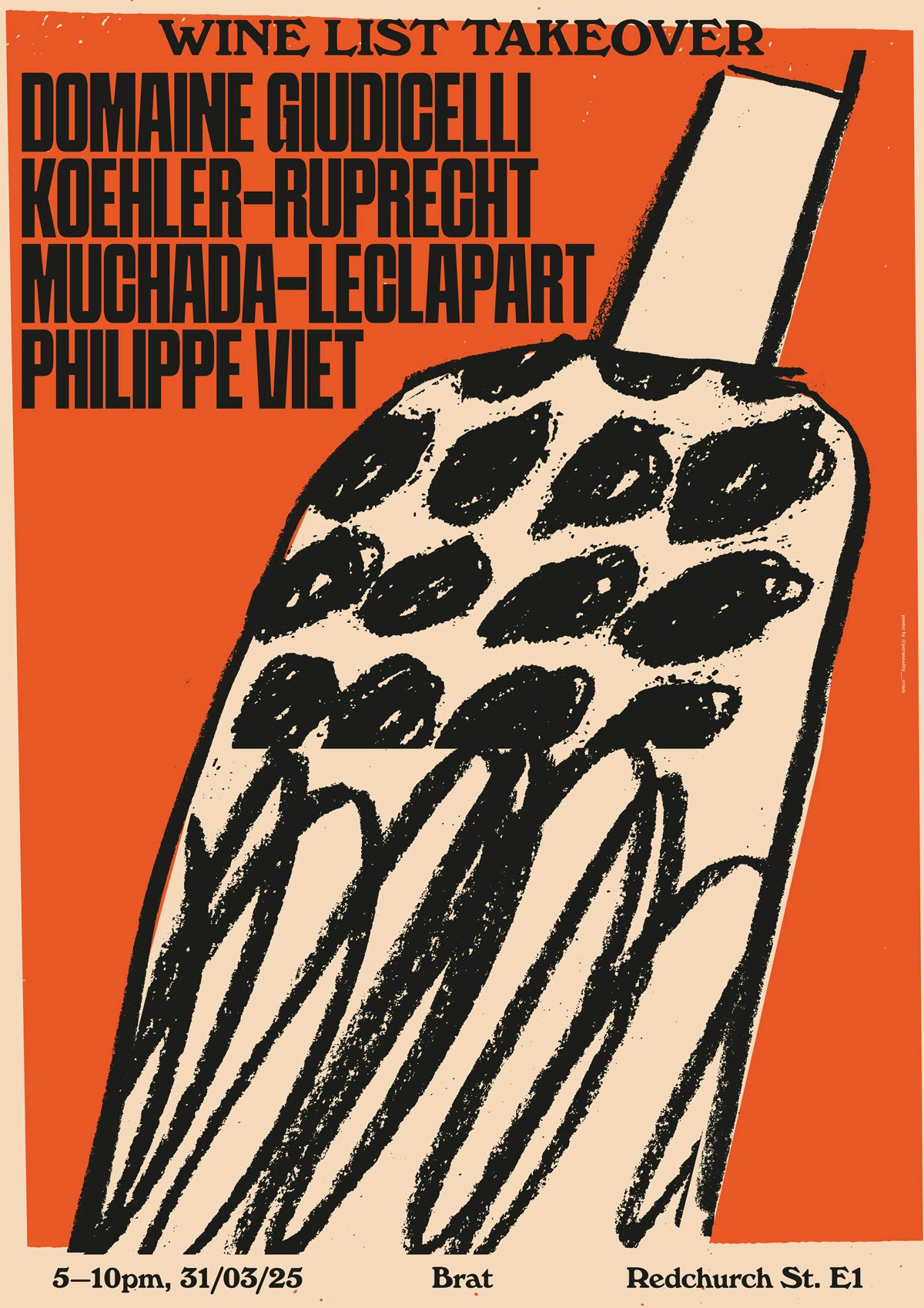Personality Crisis on designing for our obsession with food
The graphic designer has carved out a career creating striking posters for everything from raves through to cult restaurant collabs
The food and creative worlds have always been natural bedfellows to some extent, but this has only accelerated in recent years with the sheer number of design-led restaurant pop-ups, foodie collabs and supper clubs springing up.
For Rusty O’Shacklewell – better known by his graphic design alias Personality Crisis – it’s led to a fascinating career transition from designing for club nights and festivals to working with some of the biggest names in the UK’s restaurant scene, such as Brat and Mountain founder Tomos Parry.
O’Shacklewell actually started his career in fashion, working for tailor Mark Powell in Soho (next door to design collective Tomato) in the early 90s and then later for himself in Hong Kong, before landing in Shoreditch during its halcyon days and subsequently moving into the music world.

“I’d met a painter/illustrator Luke McLean, who did the Supergrass album cover I Should Coco, we decided to start doing T-shirt designs together and then began working and socialising with many musicians, DJs and record labels,” he explains.
When one of his music world collaborators, Ben Chapman, began working on a Thai barbecue concept that became the restaurant Smoking Goat, which opened in 2014, the designer was subsequently introduced to London’s now flourishing restaurant scene.
“Around that time there was a real energy and excitement about the emerging restaurant and wine scenes. I would do some logo ideas, layout menus and we took it from there really. When Smoking Goat and then Kiln opened, they started doing events with chefs and winemakers and Ben’s idea was to promote it like it was a gig or club night.”


There’s a clear throughline from O’Shacklewell’s striking poster designs now and growing up as a child of the 70s. “There was this kind of ‘psychedelic hangover’ that permeated everything from sweet wrappers to kids TV shows. It was all very colourful, fun and had amazing fonts!”
Other key influences that he cites range from designers Barney Bubbles and Sister Corita Kent through to obscure Polish and Czech film and theatre posters from the early 70s. The results in his own work, which he describes as “abstract narrative”, tend to feature bold use of type and psychedelic splashes of colour.
“I love a hidden meaning or message, so when I get commissioned, I normally ask for 10-15 words about the subject to riff off,” he explains. “That could be where a chef or artist is from and there’s a distinctive monument I can draw a shape out of, or the colours from their national flag perhaps.”


For a partnership between restaurants Youra Kim and Old Boy, the designer used references including the cover of a great early 70s Korean psychedelic folk album and the mountainous landscape of South Korea. And for the recent Brat Climpson’s Arch collab with Ancestral Wines and Clos Lentiscus, he painted a version of the Catalunya winemaker’s logo along with a subtle nod to the mascot of the Spain 1982 World Cup.
O’Shacklewell acknowledges he’s in the fortunate position that his client work largely allows him complete freedom to explore his own ideas. “I’ll be honest, they all feel like personal projects, I really enjoy doing them. If I want to explore new techniques – for example, I’ve been using more ink on paper and charcoal lately – if it’s working, I’ll run with it, if not I’ll put it on the shelf and experiment with it later for something else. No exercise or idea is ever wasted.”

He also recognises, however, that it’s much more challenging to carve out a career in the creative industries than when he first started out, particularly in increasingly expensive cities like London. “When I first started out, rents in London were so much cheaper. You could do your practice, experiment, make mistakes, work a few shifts in a bar and still cover your rent and be able to socialise, which I think is really important for making contacts for now and the future,” he says.
Asked what advice he would give to young talent trying to break into the industry now, the designer adds: “Instagram has been fantastic for exposure, networking and people reaching out, but there’s a lot of noise on there. Navigating AI will throw up challenges, but like the arrival of synthesiser in the music world, people still want to hear acoustic guitars as well.”




